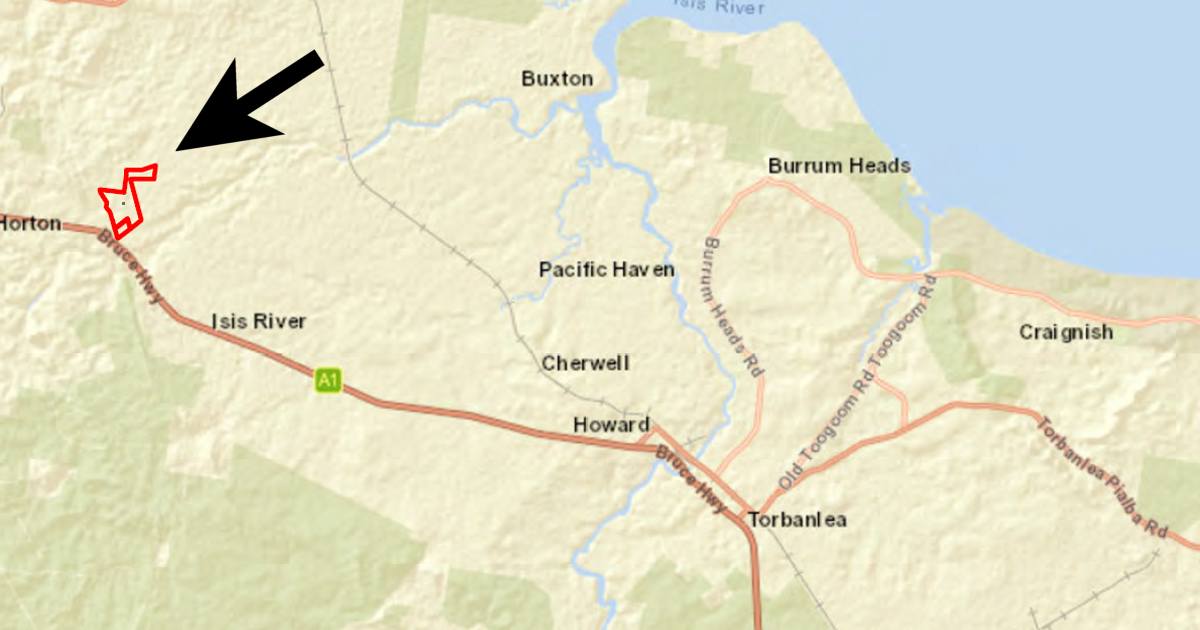
Bundaberg Regional Council has approved a development application for a proposed solar farm around 60 kilometres from the city.
The Banksia Solar Farm project, which we first mentioned in August last year, involves a 100MW (AC) PV facility to be constructed at 51 Buxton Road and 249 Lambs Road in Isis River, south of Bundaberg – not far from the existing Childers Solar Farm. The subject site has an area of 209.87 hectares, with the development footprint to cover approximately 118 hectares.
The facility would feature solar panels mounted on single axis tracking systems to maximise solar energy harvesting and it has been estimated it will generate around 130 GWh per annum, but that seems very conservative for a 100MW facility.
A substation will be built on-site that will connect to the existing 132kV transmission line that traverses the land and connects with an existing Ergon Energy substation. Banksia Solar Farm could potentially incorporate battery storage at some point, the capacity of which hasn’t been mentioned. As for the type of storage, all that is noted is:
“At this stage, the battery will be a water cooled cube-type unit solution that is likely to be installed on a small raised mound or platform.”
It’s expected Banksia Solar Farm will have a service life of 40 years, after which the facility will be decommissioned and the land reverted back to an agricultural use.
According to the proponent, Venn Artibir Pty Ltd, the project will create approximately 250 jobs during the 12-18 month construction period and there would be 3-4 ongoing jobs associated with ongoing maintenance of the site.
The development plan was approved in full with conditions by Bundaberg Regional Council last Tuesday (related documents here). When it was originally lodged, Council noted it was one the bigger solar farm projects for the region that has sought approval.
Venn Artibir Pty Ltd is still a bit of a mystery company – there’s still not much information around the web about the firm.
Bundaberg LGA – Big On Small Scale Solar Power
The biggest operational solar farm in the region is Childers Solar Farm, a 75MW project located 65km south of Bundaberg that commenced operations in 2019. The only other operational megawatt-scale solar installation in the local government area noted by the Australian Photovoltaic Institute is a 1MW system at Stockland Mall, Bundaberg. This system was part of property developer Stockland’s national rollout of solar panels across its properties that has so far resulted in 16.78MW installed by the end of the last financial year.
While Bundaberg Regional Council’s LGA might not have a huge amount of capacity in terms of large-scale solar (yet), small scale – systems below 100kW – is an entirely different story. APVI notes around 77MW of capacity had been installed up until September last year.
The most recent Clean Energy Regulator data indicates solar in Bundaberg leads the country on the small-scale front, both in terms the largest amount of PV capacity installed and also the most systems – 15,596.

 RSS - Posts
RSS - Posts



Is this land suitable for agriculture or re-wilding?
In that area it’s probably magnesium dominating over calcium in the soil, so it might be sugar cane or maybe scrub. It’s not expensive land.
So it was suitable for food production or re-wilding then? Was there was no land available that might have been less economically or ecologically damaging?
Well, it’s probably being built there because that’s where the substation is. Solar farms aren’t terribly expensive these days, but transmission still is pricey. But if my advice of putting as much solar on roofs as reasonably possible is followed, it will limit the area used for solar farms.
I agree with you on that. Seems to me that the environmentally destructive part of solar panel uptake that we either aren’t either interested in or unaware of is its massive good land consumption. And we’ve only just started. My hope is that this is only an interrum way of generating electricity and future generations will either reduce the negative impact or make it obsolete.